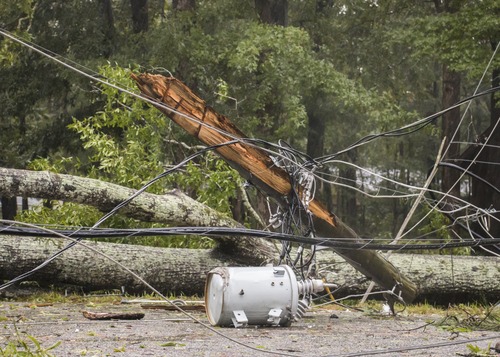FPL holds simulated hurricane exercise to test response for upcoming storm season

Florida Power & Light (FPL) held its annual storm drill this week in which they tested the response to a simulated hurricane.
The drill is a critical component of FPL’s extensive year-round training to ensure employees are ready to respond when customers need them most.
More than 3,500 FPL employees participated in this simulated exercise, which was preparing for Hurricane Constantine – a mock Category 3 storm that made a simulated landfall near Panama City. Employees were evaluated on their response and restoration efforts, including operations, logistics, communications, and customer service.
“FPL works continuously to improve the way we respond to hurricanes and how we keep our customers informed about restorations,” FPL Chairman and CEO Eric Silagy said. “Our goal to get power restored safely and as quickly as possible has not changed. With our continued use of advanced technologies and the unwavering commitment of our employees to be there for customers when they need us most, FPL is more prepared for storm season than ever before. Still, it’s important to remember that no system is hurricane-proof. That’s why it’s critical that all Floridians – regardless of whether they’ve experienced a storm – ensure they have a plan in place. The actions all of us take today – before a hurricane is on approach to Florida – will make a meaningful difference in how we recover as a state.”
FPL showcased technology used to assist with storm restoration, including drones, which can assess damage safely and quickly after a storm and reach areas inaccessible to crews on the ground. In addition, FPL previewed its new FPLAir One fixed-wing drone that is expected to begin serving customers later this year. The drone, which is the size of a small aircraft, can fly up to a thousand miles without needing to refuel.
“FPL learns from every storm, and the milestone anniversaries of Andrew and Irma remind us that we must always look for innovative ways to approach how we restore power and serve our customers,” Manny Miranda, executive vice president of FPL power delivery, said. “Today, we can respond to hurricanes better than ever as a result of the lessons we’ve learned from previous storms and the improvements we’ve made, using advanced technologies and the experience of our team.”
Since 2004, FPL has made significant investments to protect the grid against extreme weather. Among its improvements, it has replaced wooden transmission structures with new ones made of steel or concrete, hardened main power lines that serve critical community facilities and services, inspected power poles and replaced those that no longer meet FPL’s standards for strength, and installed more than 195,000 intelligent devices to detect and prevent power outages and minimize restoration times.
Further, it has managed trees and other vegetation along thousands of miles of power lines each year and placed more neighborhood power lines underground through the Storm Secure Underground Pilot Program.
